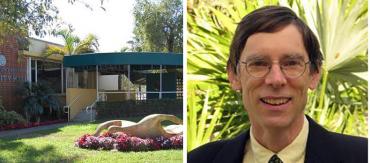
At least in the past four decades, the tool of choice for elite Florida communities to keep the riff-raff out has been unaffordable housing.
You create policies that drive up the cost of homes, turn your back on low-income housing, and little by little, the folks in steerage go back below deck, so to speak, and you don't have to deal with them.
Is this, I wonder, what's happening in the city of South Miami?
South Miami, population 12,000, is due Wednesday to vote on an ordinance that would make it the first incorporated community in Florida to require every new residential home, building, or apartment complex to install solar panels.
Mayor Philip Stoddard -- green energy-minded, a Ph.D. and a full professor in the Department of Biological Sciences at Florida International University -- is full-throttle behind the new ordinance.
Trouble is, this will add between $18,000 and $25,000 to the price of a new home -- in a city already listed as one of the costliest places in South Florida to live. According to Zillow.com, the median home value in South Miami is $495,400. That's right now, pre-solar mandate. The value has gone up 8.9 percent over the past year and Zillow predicts it will rise 1.2 percent within the next year.
In addition to a Miami-level mortgage, this solar mandate can raise monthly costs beyond whatever electrical savings the panels might provide.
Only four similar ordinances exist in the whole of the U.S., and every one is in high-priced California. Which should, but apparently doesn't, say something about the wisdom of this city quest.
Even local builders couldn't get through to city officials. At the last City Commission meeting, Vice Mayor Robert Welsh blew them off. “The Builders Association of South Florida sent a letter saying this ordinance will make South Miami unaffordable. Well, guess what?" Welsh chortled. "We're unaffordable already ... I hate to burst your bubble, but South Miami is unaffordable.”
The local chapter of Washington, D.C.-based Family Businesses for Affordable Energy (FBAE) has also tried to slow the ordinance down, get questions answered for residents wondering how this solar mandate will affect them and the city as a whole. But Stoddard has largely ignored this lobbying group, telling the Miami New Times FBAE is a kind of extension of "the electricity industry," and might even have been the ones behind a robocall campaign against the city's solar ordinance.
FBAE has denied any involvement in the robocalls and claims all it's doing is fulfilling its mission -- "working to secure ordinances and legislation that keep energy costs low and protect consumers and family businesses."
FBAE points to the absence of an impact study on the ordinance. Without a reliable assessment of how the ordinance will affect future home construction and costs, particularly for lower-income residents, how, they ask, can anyone reasonably assess how the proposed law would impact the city?
Oh, wait a minute. South Miami is "unaffordable already." I forgot. So, apparently there's little interest in low-income housing.
FBAE volunteers from South Miami sent a letter to the commission -- a last-ditch plea for reason. They hope it will be considered at Wednesday's meeting. It makes these basic points:
- Remove mandate on all new, single family homes under 2000 square feet: The South Miami Commission should work to ensure that residents have access to affordable housing. ...
- Provide residents with educational materials on preferred vendors and benefits of the ordinance as well as town halls to secure community buy-in. ...
- Provide residents with actual costs and benefits of solar panels in South Miami. The city has provided payback models and financial benefit for the solar ordinance, but those models are based on California energy prices and do not take into account Florida’s energy costs or the higher costs of insuring the panels using high costs of insurance in Florida. We would like a specific study done by the city on the costs and benefits to South Miami homeowners -- we do not think you should rely on a California cost and benefit model to justify the financials in South Miami.
Whether Mayor Stoddard and the South Miami City Commission care to acknowledge it, I'm not the only one bothered by the practice of elite-creep in towns and cities that once were economically and culturally diverse.
Affordable housing is a disappearing commodity across the U.S., according to the Summer 2017 edition of The Housing and Mortgage Market Review, published by Arch Mortgage Insurance Company. The publication is hot off the press, released Tuesday.
Over the past two years, home affordability has deteriorated the most in San Diego, Miami (my emphasis) and the San Francisco Bay area, the Review claims.
Ralph G. DeFranco, global chief economist of mortgage services at Arch Capital Services Inc. said, “I expect prices and rates to rise, meaning affordability will only worsen from here. In fact, once mortgage interest rates reach 5 percent, home ownership in high-cost areas ... could be out of reach for many people who qualify now.”
This just seems strange to me. Here's South Miami, a community so progressive with its emphasis on green energy, but so reactionary in its attraction to economic diversity.
Reach Nancy Smith at nsmith@sunshinestatenews.com or at 228-282-2423. Twitter: @NancyLBSmith
READ MORE FROM SUNSHINE STATE NEWS


